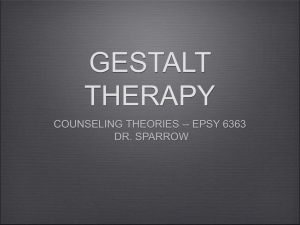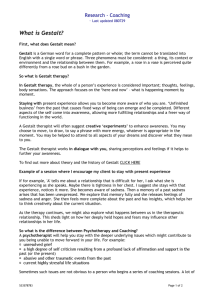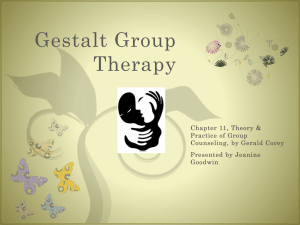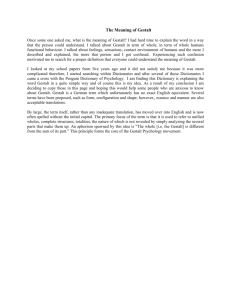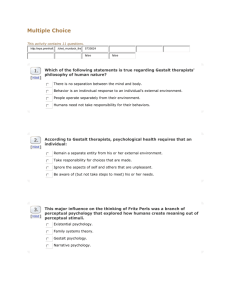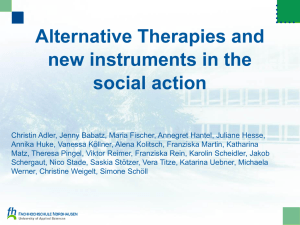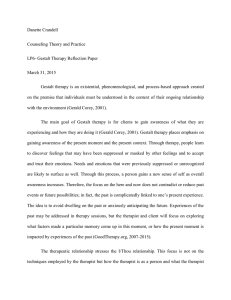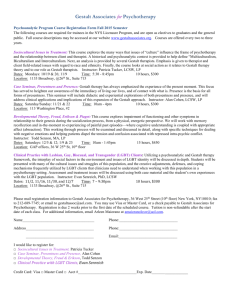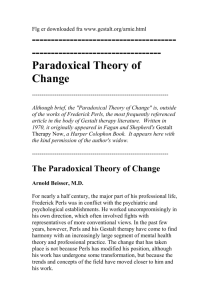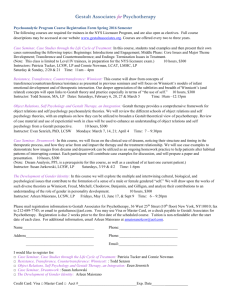Using Play Therapy in Schools
advertisement
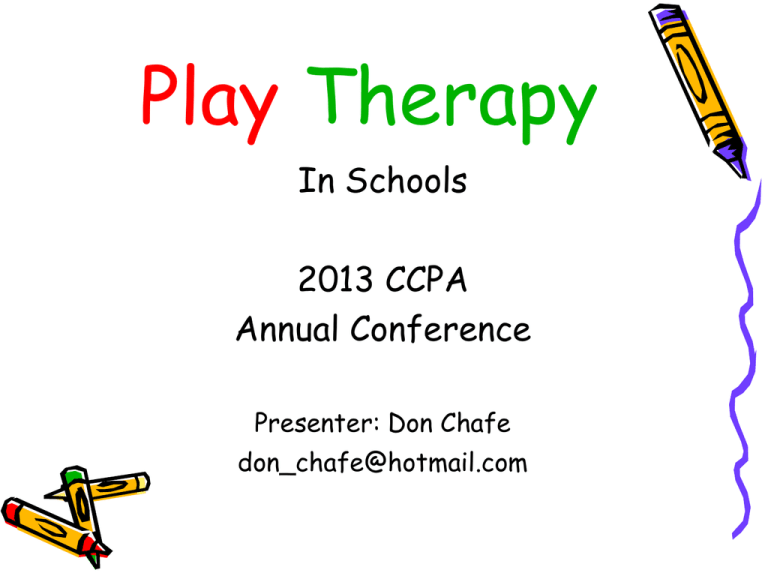
Play Therapy In Schools 2013 CCPA Annual Conference Presenter: Don Chafe don_chafe@hotmail.com Play Therapy • Why Play? • Why Therapy? • Why work with children? Why Play? • Most children readily engage in play. • Play is believed to be the natural language of childhood. • Children (and often adults) may lack the verbal ability to describe inner experience. • Play taps “magical thinking” ability. Why Therapy? • Therapy is a corrective experience. • Therapy is about change. Why work with children? • Children are embedded in a social context: – Children in families – Children in schools – Children in communities • Some schools of play therapy deal with these various levels. Why work with children? • Children have internal psychological processes. • These processes can be explored and altered in the therapeutic relationship. • This workshop will focus on therapeutic relationships with children. Some “schools” of play therapy ➲ Non-directive Prescriptive ➲ Psychoanalytic Family ➲ Sand play Group ➲ Filial Therapy Object relations ➲ Jungian Phenomenological ➲ Cognitive-Behavioral Fair Play ➲ Adlerian Time Limited ➲ Theraplay Dynamic ➲ Ecosystemic >>>>>>>>>>>> Non-directive play therapy ➲ Belief system: Child driven Child is having difficulties because he /she does not feel accepted / respected Cure is unconditional positive regard Non-directive play therapy ➲ ➲ Therapist behavior and therapeutic techniques: If you are using a technique you are not doing non-directive therapy Therapist concentrates on active listening: Tracking Reflection of feeling VERY limited questioning Tracking What do we reflect? Play sequences Child-toy interaction Project child into play Child's behavior Tracking How do we reflect? Intensity of the therapist's involvement can be varied from light to intense NOTE: Reflection of feeling can be similarly varied. Practice Practice non-directive techniques Non-directive practice Reflect Set limits THE END Setting limits What limits do we set? How do we let the child know the limits? How do we enforce the limits? Gestalt play therapy Based on the adult work of Frederick Perls Gestalt is an “experiential” therapy Gestalt Play Therapy Violet Oaklander (1978). Windows to Our Children Felicia Carroll (student of Oaklander) Gestalt Theory can be taught Heady / esoteric ideas Gestalt Therapy must be experienced Ideas meaningless without experience Gestalt Play Therapy Belief system: Therapist driven I / thou relationship Therapist encouraged the child to experience all aspects of the self while being totally present in the session Children experience problems because they lack contact with some aspect of the self or the environment Cure comes from having child establish contact ➲ Gestalt Play Therapy ➲ Therapist behavior and therapeutic techniques: Experiencing Sharing Changing perspective Identifying with elements Amplifying Using non-verbals Owning emotions Practice Practice gestalt techniques More info Canadian Association for Child and Play Therapy (CACPT) www.cacpt.com Play Therapy International www.playtherapy.org
